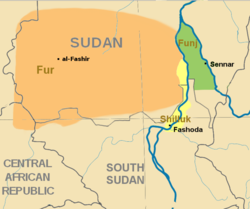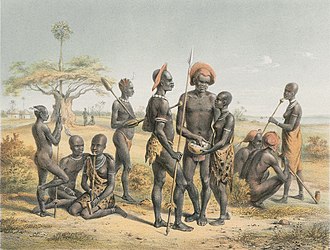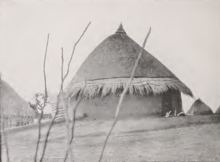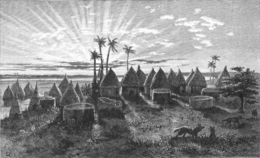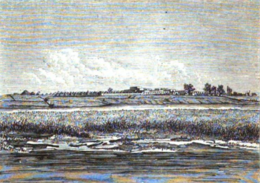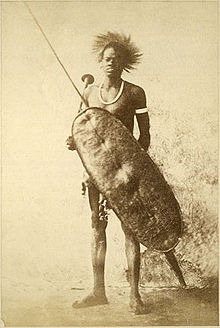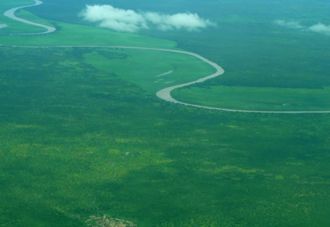The Nilotic peoples are people indigenous to the Nile Valley who speak Nilotic languages. They inhabit South Sudan, Sudan, Ethiopia, Uganda, Kenya, the Democratic Republic of the Congo, Rwanda, Burundi and Tanzania. Among these are the Burun-speaking peoples, Teso people also known as Iteso or people of Teso, Karo peoples, Luo peoples, Ateker peoples, Kalenjin peoples, Datooga, Dinka, Nuer, Atwot, Lotuko, and the Maa-speaking peoples.
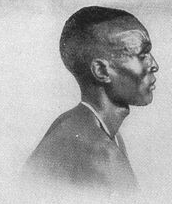
The Dinka tribe are a Nilotic ethnic group native to South Sudan. The Dinka mostly live along the Nile, from Bor to Renk, in the region of Bahr el Ghazal, Upper Nile, and the Abyei Area of the Ngok Dinka in South Sudan.

The Funj Sultanate, also known as Funjistan, Sultanate of Sennar or Blue Sultanate, was a monarchy in what is now Sudan, northwestern Eritrea and western Ethiopia. Founded in 1504 by the Funj people, it quickly converted to Islam, although this conversion was only nominal. Until a more orthodox form of Islam took hold in the 18th century, the state remained an "African empire with a Muslim façade". It reached its peak in the late 17th century, but declined and eventually fell apart in the 18th and 19th centuries. In 1821, the last sultan, greatly reduced in power, surrendered to the Ottoman Egyptian invasion without a fight.
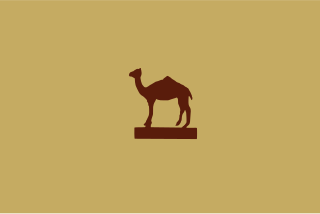
Kordofan is a former province of central Sudan. In 1994 it was divided into three new federal states: North Kordofan, South Kordofan and West Kordofan. In August 2005, West Kordofan State was abolished and its territory divided between North and South Kordofan States, as part of the implementation of the Comprehensive Peace Agreement between the Government of Sudan and the Sudan People's Liberation Movement. West Kordofan was reestablished in July 2013.
The Funj are an ethnic group in present-day Sudan. The Funj set up the Funj Sultanate with Abdallah Jamma and ruled the area for several centuries. The Funj rose in southern Nubia and had overthrown the remnants of the old Christian kingdom of Alodia. In 1504 a Funj leader named Amara Dunqas, founded the Black Sultanate at Sannar. The Black Sultanate soon became the keystone of the Funj Empire.
Bādī II Abū Daqn, known as The Bearded, was a ruler of the Kingdom of Sennar. He was the son of Rabat I and ascended to the throne in 1644/5.

The Shilluk is a major Luo Nilotic ethnic group that resides in the northeastern state of the Upper Nile in South Sudan, living on both banks of the Nile River in Malakal. Before the Second Sudanese Civil War, the Shilluk also lived in settlements on the northern bank of the Sobat River, close to where the Sobat joins the Nile.

Malakal is a city in South Sudan, serving as the capital of Upper Nile State, South Sudan, along the White Nile River. It also serves as the headquarter of Malakal county and it used to be the headquarter of Upper Nile Region from 1970s to late 1990s.

The Islamization of the Sudan region (Sahel) encompasses a prolonged period of religious conversion, through military conquest and trade relations, spanning the 8th to 16th centuries.
Makk, also spelled mak, mek or meek, is a title formerly used in the Sudan, meaning "ruler" or "king". There are three theories of its origins. It may be a corruption of the Arabic word malik, meaning "king"; it may descend from Meroitic mk, meaning "God", appropriate to the divine kingship practised in the Sudan; or, as E. A. Wallis Budge proposed, it may be derived from Ge'ez መከሐ (mkḥ), meaning "to be glorious", making it an Ethiopian import. The territory ruled by a makk may be called a "makkdom" or "mekdom" in English.
Bor is a city and county in the central region of South Sudan.

South Sudan is home to around 60 indigenous ethnic groups and 80 linguistic partitions among a 2021 population of around 11 million. Historically, most ethnic groups were lacking in formal Western political institutions, with land held by the community and elders acting as problem solvers and adjudicators. Today, most ethnic groups still embrace a cattle culture in which livestock is the main measure of wealth and used for bride wealth.
The history of South Sudan comprises the history of the territory of present-day South Sudan and the peoples inhabiting the region.
Ethnic violence in South Sudan has a long history among South Sudan's varied ethnic groups. South Sudan has 64 tribes with the largest being the Dinka, who constitute about 35% of the population and predominate in government. The second largest are the Nuers. Conflict is often aggravated among nomadic groups over the issue of cattle and grazing land and is part of the wider Sudanese nomadic conflicts.

The South Sudanese Civil War was a multi-sided civil war in South Sudan between forces of the government and opposition forces. In December 2013, President Salva Kiir accused his former deputy Riek Machar and 10 others of attempting a coup d'état. Machar denied trying to start a coup and fled to lead the Sudan People's Liberation Movement-in-Opposition (SPLM-IO). Fighting broke out between the Sudan People's Liberation Movement (SPLM) and SPLM-IO, igniting the civil war. Ugandan troops were deployed to fight alongside the South Sudanese government. The United Nations has peacekeepers in the country as part of the United Nations Mission in South Sudan (UNMISS).
Ngok Lual Yak is an African sub-tribe, within the Jiëŋ (Dinka) group. They are mainly found in Malakal, South Sudan and inhabit the land along the confluences of the Nile and Sobat rivers. It is believed that the sub-tribe numbers about 95,000. They are devoted ethnics and believe in Deŋdit as their provider. Some of Ngok sections are part of Bor Community and sections who identifies themselves as descendants of Ngok could still be traced!
The Hamaj Regency was a political order in modern-day central Sudan from 1762 to 1821. During this period the ruling family of the Funj Sultanate of Sennar continued to reign, while actual power was exercised by the regents.

The Kingdom of Fazughli was a precolonial state in what is now southeastern Sudan and western Ethiopia. Oral traditions assert its establishment to refugees from the Nubian Kingdom of Alodia, after its capital Soba had fallen to Arabs or the Funj in c. 1500. Centered around the mountainous region of Fazughli on the Blue Nile and serving as a buffer between the Funj sultanate and the Ethiopian empire, the kingdom lasted until its incorporation into the Funj sultanate in 1685.

The Abdallabi are people living in central Sudan who claim descent from Abdallah Jamma’a. They were an important political force between the fifteenth and eighteenth centuries. For a short time the Abdallabi succeeded in establishing an independent state, but they were defeated by the Funj Sultanate in 1504 and thereafter ruled over the Butana as vassals until the Egyptian conquest of 1820.

Reth Kwongo Dak Padiet I is the reigning Reth of the Shilluk Kingdom, He is the 35th King of Shilluk. Shilluk Kingdom was located along the left and right bank of the White Nile in what is now South Sudan and southern Sudan.
